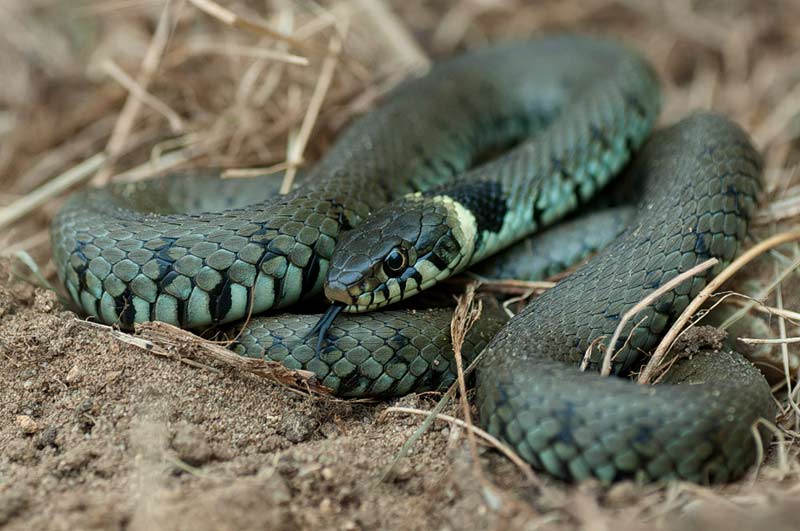Alison Fure

Grass Snake | © northeastwildlife.co.uk
A planning application to develop the largest area of standing water in Kingston upon Thames was defeated last year. The application proposed to construct sixty-four floating homes on the Seething Wells former filter beds, with the addition of a restaurant, a marina and a lock which would open an area of standing water to the River Thames. Permission was refused on the grounds that residential development on Metropolitan Open Land was inappropriate, thus taking us to a public inquiry. The filter beds are a wildlife haven. They are important for wintering wildfowl and lapwing, and attract 5% of the breeding population of little grebe in the vice-county of Surrey. Ten bat species have been recorded at the site and on the adjacent riverside, including a Daubenton’s maternity colony. The site has more noctule bats foraging at any one time than at the London Wetland Centre and a rare Brandt’s bat, recorded along the river wall, was a first for the borough in 2012. It is designated a Grade 1 Site of Borough Importance for Nature Conservation largely on account of its chalk grassland, which has been described as characteristic of the North Downs. Members of the Friends of Seething Wells appeared at the public inquiry in November last year. They were very grateful for the support they received from London Wildlife Trust and from GiGL who provided information on species recorded on the site. Juvenile grass snakes recorded during an ecological assessment of the site were evaluated as ‘common’ by the developer’s consultants. Yet records provided by GiGL showed that grass snakes were recorded at only four sites in the borough and that there was a complete absence of any breeding records. An officer from London Wildlife Trust appeared at the inquiry to give evidence of the site’s wildlife value. The Trust also enabled a visit to Woodberry Wetlands in Stoke Newington, an LWT managed waterworks site, which showed the practicalities of opening a former Thames Water utility site to members of the public. The information provided by GiGL and by the Trust, certainly assisted the development being refused permission. Unfortunately, at the time of writing, none of the data obtained by the developer’s consultants during the suite of surveys carried out between 2010 and 2012 has been submitted to GiGL and is therefore not available to inform future decisions. This information includes the aforementioned breeding record of grass snake, a rare invertebrate species, eleven noctules foraging across the site and the rare Brandt’s bat (one of only five records that exist for this species in the entire GiGL database).
Alison Fure is a field ecologist and trainer for the London Bat Group. She has an interest in the effects of artificial lighting on wildlife and has written for the London Naturalist on this issue.
